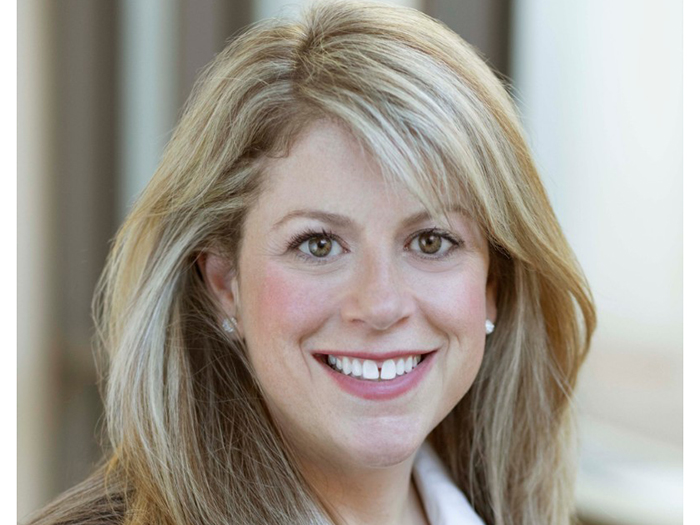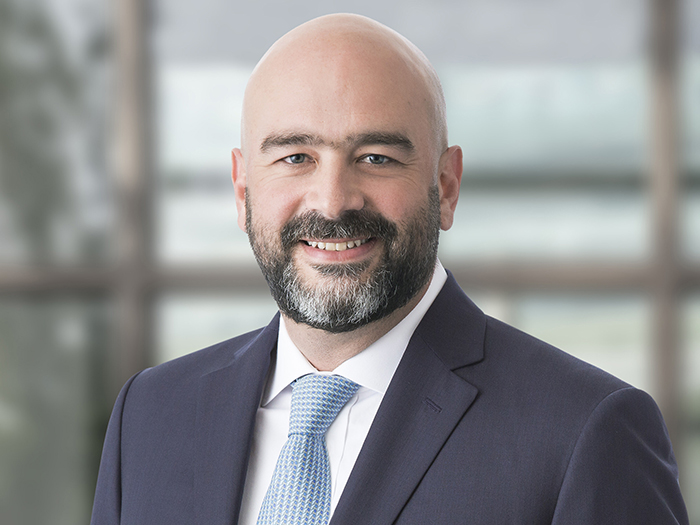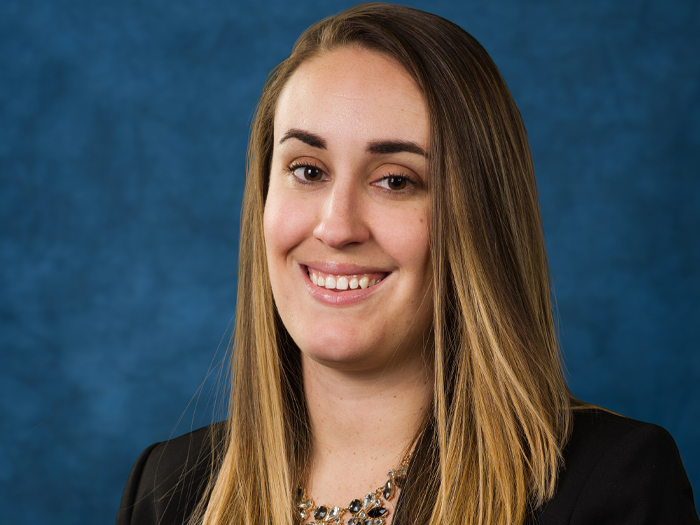Sponsored Content by Optum
Sharpening the Tools

FROM LEFT, Dan Reynolds, Melanie Armstrong, Tron Emptage and Helen Weber.
Workers’ compensation claims specialists can take well-earned pride in their higher purpose. They help injured workers heal and get back to leading productive lives.
Tempering that glow of good feeling is the certainty that their burden never lightens.
Delivering the best service going forward will mean tackling the advent of medical marijuana use, polypharmacy issues, the challenge of appropriate opioid use, and controlling medical costs through more collaborative interaction with physicians, along with winning the competition to attract and retain the best claims management talent.
In July, Risk & Insurance® and the workers’ compensation and auto no-fault division of Optum convened a roundtable discussion in Chicago with veteran workers’ compensation claims management professionals to gain insight into the challenges that can vex claims management specialists, and what solutions they go to.
With 25 states having passed or enacted laws legalizing the use of medical marijuana, roundtable members agreed that the chronic pain management landscape in workers’ compensation is undergoing a dramatic shift.
Chicago roundtable participant Melanie Armstrong, medical services manager with American Mining Insurance Group, pointed to a number of challenges legalized marijuana presents. For one, she feels legalization has happened too quickly, with not enough consideration for the consequences.
“I think that it should be a slow, methodical process,” Armstrong said.
“For those medical conditions that it has been approved for, there’s not been enough time to look at outcomes and see if there is more benefit than risk.”
Tron Emptage, chief clinical officer for the workers’ compensation and auto no-fault division of Optum, agrees more research needs to be conducted especially in the area of chronic non-cancer pain and other work-related conditions.
The roundtable participants also discussed the ongoing battle against opioids. Due perhaps to the efforts of pharmacy benefit managers and the workers’ compensation community in general, the use of opioids is down, but the risk of misuse and abuse is still very much alive.
Having the right tools in place to insure that the use of a pain medication is appropriate is a key to pharmacy claims management. The good news is that detoxification programs, drug monitoring and pharmacy benefit management programs are not only available, but working. So too are functional restoration programs, when paired with claimant-specific weaning processes, and cognitive behavioral therapy.
“From a claims management standpoint, in partnership with our pharmacy benefit manager, it is important to have controls in place to verify the medical necessity of prescribed pain medications that could lead to misuse or abuse,” said Helen Weber, an assistant vice president and head of medical strategy for the Hanover Insurance Group.
Building the right monitoring systems so that payers, insureds and their workers are well protected is a pressing consideration, Emptage said.
“That’s where the tools in our toolbox have to be strong, in order for adjusters to engage the right resources and facilitate those conversations with physicians and the injured workers to support achieving the right outcome,” Weber said.
Yet another concern, according to Optum’s Emptage, is the use of benzodiazepines such as Valium. These medications can cause serious adverse events if not monitored closely and if taken in the wrong combinations, for example with marijuana, other illicit drugs or even an opioid.
Polypharmacy, disparate drugs whose combined effects can overwhelm a patient, are another ongoing worry, Hanover’s Weber said. “Do they understand the potential risks of taking an opioid?” she added.
“For those medical conditions that [marijuana] has been approved for, there’s not been enough time to look at outcomes and see if there is more benefit than risk.”
— Melanie Armstrong, medical services manager, American Mining Insurance Group
That’s one of the reasons why educating patients about the effects of medications, and how combining them can be so dangerous, is such a priority for the industry.
Value-Based Purchasing
It’s well known that pharmacy spend drives medical costs in workers’ compensation.
Getting physicians aligned with your organization’s treatment philosophies and expectations is another important area of claims management focus.
Armstrong manages risk for mining companies. On the one hand, that profession sees severe injuries that can be challenging to manage. On the other, mining is geography specific, so a clinic within a given region could be more easily leveraged to fall in line with a claims executive’s expectations regarding adherence to treatment guidelines and other medical management best practices.
Even with that claimant demographic, American Mining’s Melanie Armstrong impressed her fellow roundtable members with her creative approach to collaborating with prescribers.
Drawing from her background and years of expertise, she has started a new program in which a physician or group of physicians is hand-selected, based on their service and performance, to hold themselves and their peers accountable to best practice standards of care.
“You’ve got a group of physicians who are strategically placed to help you with the program, making sure that there is one physician in the group who can hold the others accountable. I’ve found that it drives outcomes,” she said.
So, how to accomplish that?
Armstrong says to find one physician who agrees with your company’s vision and objectives.
“You meet with them and you say, ‘This is the program. This is what we’re trying to accomplish. Do you agree with that?’”
“What we’re starting to see is this …,” Armstrong said. “This doc nudges that doc to do the right thing, who nudges this doc … and it just keeps going. In the end, you’re meeting your goals, you’re meeting your objectives because it’s peer-to-peer, and importantly, the claimant’s therapy plan is safer, more efficacious and cost-effective.”
That approach may be easier said than done when it comes to opioid use management, she said.
“Finding the right provider with the philosophies that are in line with our vision and making sure we are aligned in our approach has been quite difficult,” she said.
“It keeps me up at night finding the prescribers that will work with us,” she said.
Hanover’s Weber said that’s where she’d expect her pharmacy benefit manager to help out; utilizing their larger network to identify care providers focused on achieving improved functional restoration, recovery and return-to-work outcomes.
“How do we advertise to say you’re going to touch on all of these different skill sets and opportunities as an adjuster that you might not experience in another role?”
— Helen Weber, assistant vice president; head of medical strategy, Hanover Insurance Group
Emptage agrees that pharmacy benefit managers can assist a payer by leveraging prescription data to help identify prescriber trends across an entire book of business. Data mining can show global trends that might be missed in a smaller book of business or at an adjuster’s desk.
“Our most successful client partnerships include those who want to dig into our data as much as we do, and who use our data to have conversations with physicians, or allow us to do so,” he said.
“Some of our most successful clients include those that want to partner on data analysis whether to trend on prescribers with improved outcomes or new dispensing trends.”
The Talent Question
The third major bucket that the Chicago roundtable participants tackled was the talent question.
Drive down the highway and you see billboards. Turn on the radio and you hear advertisements.
Click on your favorite web page and you see pop-ups.
As integrated as insurance and risk management is in modern business, it’s a bitter irony in our marketing-saturated culture that the insurance industry struggles to market itself to new talent and faces a painful talent crunch in workers’ compensation claims management.
Our Chicago roundtable members have some good ideas in that regard. For one, according to Hanover Insurance Group’s Weber, getting a new generation to see the value in being a claims adjuster means taking over the narrative and giving it the proper color.
“It’s interesting when you think about what a claims adjuster’s responsibilities are,” she said.
“The adjuster wears many hats throughout the life of the claim; that of a skilled communicator, negotiator, problem solver, medical professional, and financier, to name a few. They interact with a wide variety of industries and individuals. They provide customer service. But most importantly, they help injured workers navigate the complex workers’ compensation system in order to receive the appropriate care to recover from their injury, restore their function, and get them back to their livelihood. How do we advertise to say you’re going to touch on all of these different skill sets and opportunities as an adjuster that you might not experience in another role?”
That quest for new talent can also find reinforcement in what we mentioned at the top. Workers’ compensation has a noble higher purpose. It’s about loss prevention and helping people get better if they do suffer an unfortunate accident.
That oft-discussed generation born in the 1980s — don’t call them millennials, they hate that — are saddled with a number of traits. Some that may be relevant are that they are technologically savvy and seek connectivity and higher purpose in their work.
What better place for this group than in workers’ compensation claims management, where data is king and the idea is to heal people?
Again, American Mining’s Armstrong reports some approaches that have produced good results.
She’s in frequent communication with nursing schools, seeking, as she put it, “the cream of the crop” and as staffing needs dictate, is bringing those candidates into her organization’s mentorship program.
“It’s been nice to have some fresh talent in our organization over the last couple of years,” she said.
“Our most successful client partnerships include those who want to dig into our data as much as we do, and who use our data to have conversations with physicians, or allow us to do so.”
— Tron Emptage, chief clinical officer, Optum Workers’ Comp
That fresh talent can also help more established workers over the technology hump. As many of us can attest, teaching up-to-date technology skills to someone in their 50s or 60s has its own challenges.
Inexperienced new hires may benefit from exposure to multiple areas in their first couple of years of their career, which also can foster continued engagement and help support the establishment of strong foundational claims expertise, according to Hanover’s Weber.
Back in the day, as we say, claims adjusters were trained across all lines of business. That approach has waned, many say.
“Building that foundational claims expertise that can be leveraged wherever the needs may take you as the business changes, allows us to be more nimble to feed the future of claims handling,” she said.
It can be said of many in the insurance industry that they weren’t quite sure what they wanted to do when they got out of college. They might enter an internship, or take that first job at an insurance company and wind up engaged for life.
Mention the terms “workers’ compensation” and “insurance” at a dinner party and some guests might start fiddling with their napkins out of boredom and embarrassment. But for those charged with managing workers’ compensation claims, there is plenty to keep them engaged.
There is so much yet to play out in the intersection of legal and illegal drugs and how they will impact workers’ compensation claims. Engaging a new generation in this field and taking advantage of their energy could be a game changer. Giving them the right tools to read, interpret and implement best medical practices could be a game winner.
Opinions of the roundtable participants are the opinions of each individual contributor and are not necessarily reflective of their respective companies.
![]()
![]()
This article was produced by the R&I Brand Studio, a unit of the advertising department of Risk & Insurance, in collaboration with Optum.











